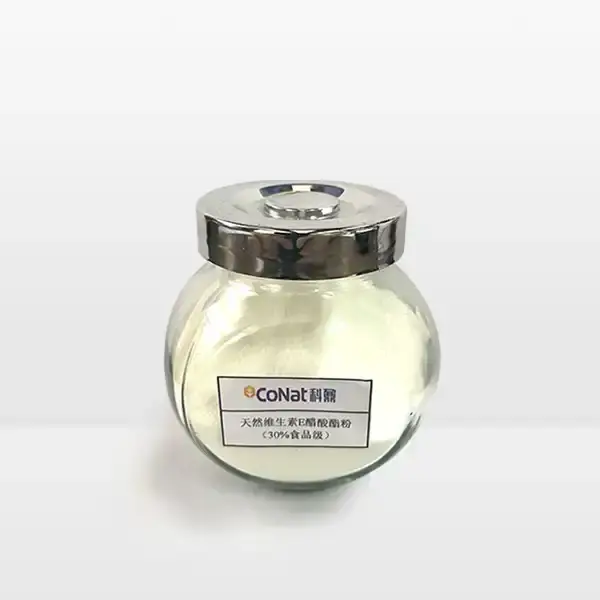- English
- French
- German
- Portuguese
- Spanish
- Russian
- Japanese
- Korean
- Arabic
- Greek
- German
- Turkish
- Italian
- Danish
- Romanian
- Indonesian
- Czech
- Afrikaans
- Swedish
- Polish
- Basque
- Catalan
- Esperanto
- Hindi
- Lao
- Albanian
- Amharic
- Armenian
- Azerbaijani
- Belarusian
- Bengali
- Bosnian
- Bulgarian
- Cebuano
- Chichewa
- Corsican
- Croatian
- Dutch
- Estonian
- Filipino
- Finnish
- Frisian
- Galician
- Georgian
- Gujarati
- Haitian
- Hausa
- Hawaiian
- Hebrew
- Hmong
- Hungarian
- Icelandic
- Igbo
- Javanese
- Kannada
- Kazakh
- Khmer
- Kurdish
- Kyrgyz
- Latin
- Latvian
- Lithuanian
- Luxembou..
- Macedonian
- Malagasy
- Malay
- Malayalam
- Maltese
- Maori
- Marathi
- Mongolian
- Burmese
- Nepali
- Norwegian
- Pashto
- Persian
- Punjabi
- Serbian
- Sesotho
- Sinhala
- Slovak
- Slovenian
- Somali
- Samoan
- Scots Gaelic
- Shona
- Sindhi
- Sundanese
- Swahili
- Tajik
- Tamil
- Telugu
- Thai
- Ukrainian
- Urdu
- Uzbek
- Vietnamese
- Welsh
- Xhosa
- Yiddish
- Yoruba
- Zulu
Is Vitamin E Acetate Powder Safe to Consume?
Vitamin E acetate powder has become a subject of increasing interest in the health and wellness community, sparking conversations about its safety, potential benefits, and appropriate usage. This comprehensive exploration delves into the critical aspects of vitamin E acetate powder, examining its properties, scientific understanding, and consumption considerations from multiple perspectives. As nutritional science continues to evolve, understanding the nuanced characteristics of supplements like vitamin E acetate powder becomes increasingly important for individuals seeking to optimize their health and wellness strategies.
What Exactly Is Vitamin E Acetate Powder and How Does It Work in the Human Body?
The Chemical Composition of Vitamin E Acetate Powder
Vitamin E acetate powder represents a sophisticated form of vitamin E that has been carefully processed to enhance its stability and potential bioavailability. At its core, this compound is a synthetic ester of tocopherol, designed to provide a more controlled and concentrated delivery of vitamin E's essential nutrients. The molecular structure of vitamin E acetate powder allows for improved storage capabilities and reduces oxidation, making it an attractive option for various nutritional and pharmaceutical applications.
The chemical transformation from natural vitamin E to its acetate form involves adding an acetate group to the original molecule, which fundamentally alters its chemical properties. This modification creates a more robust compound that can withstand varying environmental conditions while maintaining its nutritional integrity. Researchers have extensively studied the metabolic pathways through which vitamin E acetate powder is processed by the human body, revealing complex interactions with cellular mechanisms and potential health-supporting functions.
The synthesis process of vitamin E acetate powder is a testament to advanced chemical engineering. Pharmaceutical scientists utilize sophisticated techniques to ensure the highest level of purity and efficacy. The production involves precise molecular manipulations that transform natural tocopherol into a more stable and versatile form. This process not only extends the shelf life of the vitamin but also enhances its potential for targeted nutritional interventions.
Metabolic Processing of Vitamin E Acetate
When vitamin E acetate powder enters the human digestive system, it undergoes a sophisticated enzymatic conversion process. The pancreatic esterases, specialized enzymes present in the digestive tract, break down the acetate ester, releasing the pure vitamin E (tocopherol) for absorption. This intricate metabolic pathway ensures that the body can effectively utilize the nutritional components of the compound, transforming the synthetic powder into a bioavailable form that can interact with cellular systems.
The absorption mechanism is particularly fascinating from a biochemical perspective. As the vitamin E acetate powder is hydrolyzed, it undergoes a complex series of transformations that prepare it for cellular integration. The released tocopherol molecules demonstrate remarkable adaptability, navigating through the intricate digestive and circulatory systems with remarkable efficiency. This process highlights the body's sophisticated ability to process and utilize nutritional compounds in their most optimal form.
Nutritional researchers continue to investigate the nuanced interactions between vitamin E acetate powder and human metabolic processes. Emerging studies suggest that the acetate form may offer unique advantages in terms of absorption and utilization compared to other vitamin E supplementation methods. The ongoing research provides increasingly sophisticated insights into the compound's potential health benefits and metabolic interactions.
Absorption and Cellular Utilization Mechanisms
The absorption of vitamin E acetate powder is a nuanced biological process that involves multiple physiological systems. Once hydrolyzed in the digestive tract, the released tocopherol molecules are transported through the intestinal wall into the bloodstream, where they are then distributed to various tissues and organs. The lipophilic nature of vitamin E allows it to integrate seamlessly with cell membranes, providing potential protective and regulatory functions at the cellular level.
Cellular integration represents a complex dance of molecular interactions. The tocopherol molecules demonstrate an extraordinary ability to interact with various cellular components, potentially supporting membrane integrity, cellular signaling, and protective mechanisms. The unique properties of vitamin E acetate powder enable a more controlled and sustained delivery of these critical nutritional components, distinguishing it from other supplementation approaches.
The interaction between vitamin E acetate powder and cellular systems extends beyond simple nutritional supplementation. Researchers are increasingly exploring the compound's potential role in supporting complex biological processes, including cellular communication, oxidative stress management, and potential immune system modulation. Each new study provides additional layers of understanding about this remarkable nutritional compound.

How Does Vitamin E Acetate Powder Compare to Other Vitamin E Supplements?
Comparative Analysis of Vitamin E Supplementation Forms
Vitamin E acetate powder distinguishes itself from other vitamin E supplementation forms through its unique chemical characteristics and potential advantages. Unlike traditional vitamin E oil-based supplements, the powder form offers enhanced stability, reduced oxidation risk, and more precise dosage control. Manufacturers and nutritional scientists have recognized these properties, leading to increased interest in developing advanced supplement formulations that leverage the distinctive attributes of vitamin E acetate powder.
Manufacturing and Purity Considerations
The production of high-quality vitamin E acetate powder involves sophisticated manufacturing processes that prioritize purity and consistency. Advanced extraction and purification techniques ensure that the final product meets rigorous quality standards, minimizing potential contaminants and maximizing the concentration of active vitamin E components. Pharmaceutical-grade manufacturing protocols involve multiple verification steps, including spectroscopic analysis, chromatographic separation, and comprehensive quality control measurements.
Dosage and Standardization Approaches
Determining appropriate dosage for vitamin E acetate powder requires careful consideration of individual nutritional needs, health status, and potential interactions with other dietary components. Nutritional experts recommend consulting healthcare professionals to establish personalized supplementation strategies. The powder form allows for more flexible dosing compared to pre-formulated capsules or tablets, enabling more precise nutritional interventions tailored to specific health objectives.
What Scientific Research Reveals About Vitamin E Acetate Powder's Potential Benefits?
Antioxidant Mechanisms and Cellular Protection
Scientific research has consistently highlighted vitamin E's fundamental role as a potent antioxidant, with vitamin E acetate powder presenting an advanced delivery mechanism for these protective properties. At the molecular level, tocopherols act as free radical scavengers, neutralizing potentially harmful oxidative agents that can cause cellular damage. The acetate form's enhanced stability potentially amplifies these protective mechanisms, offering a more consistent and sustained antioxidant response.
Potential Immunomodulatory Effects
Emerging research suggests that vitamin E acetate powder might play a significant role in supporting immune system functionality. Immunological studies have demonstrated tocopherol's capacity to modulate inflammatory responses and support cellular communication within immune networks. The precise molecular interactions between vitamin E and immune cell signaling pathways represent a fascinating area of ongoing scientific investigation.
Neurological and Cognitive Health Implications
Preliminary scientific investigations have explored potential neurological benefits associated with vitamin E supplementation. Researchers are particularly interested in understanding how vitamin E acetate powder might contribute to maintaining neuronal health and potentially mitigating age-related cognitive decline. While conclusive evidence requires further research, initial findings suggest intriguing possibilities for neurological support mechanisms.
Conclusion
Vitamin E acetate powder represents a sophisticated nutritional supplement with promising potential. Careful consideration, professional guidance, and continued scientific research are essential for understanding its comprehensive health implications.
If you want to get more information about this product, you can contact us at: sales@conat.cn.
References
1. Brigelius-Flohé R, Traber MG. Vitamin E: function and metabolism. FASEB Journal. 1999;13(10):1145-1155.
2. Mustacich D, Bruno R. Vitamin E: critical reviews of standard current treatments. Molecular Nutrition & Food Research. 2007;51(10):1210-1224.
3. Traber MG. Vitamin E Regulatory Mechanisms. Annual Review of Nutrition. 2007;27:347-362.
4. Sen CK, Khanna S, Roy S. Tocotrienols in health and disease: The other half of the natural vitamin E family. Molecular Aspects of Medicine. 2007;28(5-6):692-728.
5. Zingg JM. Vitamin E: An Overview of Its Current Research and Future Directions. Free Radical Biology and Medicine. 2012;53(3):615-625.
6. Schneider C. Chemistry and Biology of Vitamin E. Molecular Nutrition & Food Research. 2005;49(1):7-30.
YOU MAY LIKE
